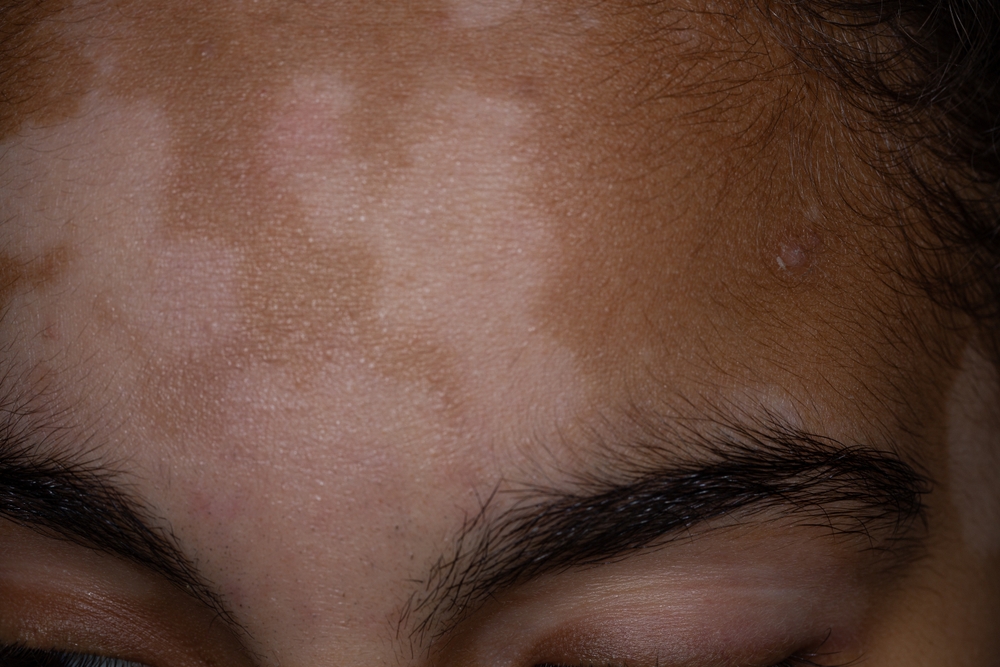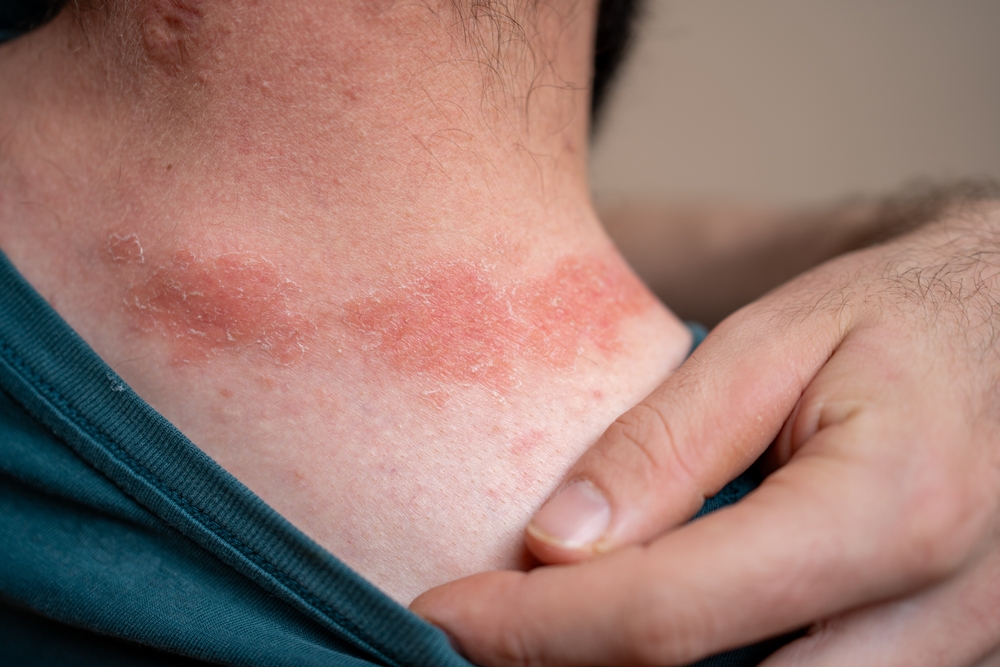Hypopigmentation vs Vitiligo: Causes, Symptoms, and Treatment

Strong 8k brings an ultra-HD IPTV experience to your living room and your pocket.
Hypopigmentation and vitiligo are two skin conditions that cause loss of pigment, but they have distinct causes, symptoms, and treatments. Hypopigmentation refers to lighter skin patches caused by injuries, infections, or underlying conditions, while vitiligo is an autoimmune disorder that results in well-defined white patches due to melanocyte loss.
In this blog, we will explore the key differences between hypopigmentation vs vitiligo, including their causes, symptoms, and available treatment options.
What is Hypopigmentation?
Hypopigmentation refers to a condition where certain areas of the skin become lighter than the surrounding skin due to a decrease in melanin production. Melanin is the pigment responsible for giving skin, hair, and eyes their color. When melanin production is disrupted or reduced, the affected skin appears paler than the rest of the body. Unlike vitiligo, which results in stark white patches due to a complete loss of pigment, hypopigmentation can present as lighter patches that still retain some color.
Common Causes of Hypopigmentation
Skin Injuries (Burns, Cuts, Infections)
- When the skin undergoes trauma such as burns, deep cuts, or infections, it can result in post-inflammatory hypopigmentation.
- The skin may heal with lighter patches due to damage to melanocytes (the cells that produce melanin).
- Some injuries lead to temporary hypopigmentation, while others can cause permanent pigment loss.
Certain Skin Conditions (Eczema, Psoriasis)
- Chronic skin conditions like eczema (atopic dermatitis) and psoriasis can cause inflammation, leading to temporary hypopigmentation.
- After a flare-up, the skin may heal with lighter patches, but in most cases, the color returns over time.
Genetic Factors
- Some people are born with genetic conditions that affect pigmentation, such as albinism or piebaldism, which result in lifelong hypopigmentation.
- These conditions occur due to mutations affecting melanin production or distribution in the skin.
Nutritional Deficiencies
- A lack of essential nutrients like vitamin B12, iron, or copper can interfere with melanin production.
- Prolonged deficiencies may cause generalized or patchy hypopigmentation.
Fungal Infections (Tinea Versicolor)
- Tinea versicolor is a common fungal infection caused by the overgrowth of Malassezia yeast on the skin.
- It disrupts melanin production, leading to lighter (or sometimes darker) patches, especially on the chest, back, and arms.
- These patches may be more noticeable in tanned or darker-skinned individuals and can be treated with antifungal medications.
Hypopigmentation can result from various causes, ranging from temporary skin inflammation to chronic conditions. While some cases resolve naturally, others may require medical intervention to restore pigmentation or prevent further skin damage.
What is Vitiligo?
Vitiligo is a skin condition characterized by the loss of pigment in certain areas, leading to the appearance of white patches on the skin. This occurs when melanocytes, the cells responsible for producing melanin (skin pigment), are destroyed or stop functioning. Vitiligo can develop anywhere on the body, including the face, hands, arms, legs, and even inside the mouth. It may also affect the hair, causing premature graying or whitening.
Vitiligo is not contagious or life-threatening, but it can significantly impact a person’s self-esteem and emotional well-being. The extent of pigment loss varies from person to person—some may experience small patches, while others may develop widespread depigmentation.
Causes of Vitiligo
Autoimmune Response
- The most widely accepted cause of vitiligo is an autoimmune disorder, in which the body’s immune system mistakenly attacks its own melanocytes.
- This results in the destruction or dysfunction of pigment-producing cells, leading to white patches on the skin.
- Autoimmune diseases such as thyroid disorders and type 1 diabetes are often linked to vitiligo, suggesting a connection between immune system activity and pigment loss.
Genetic Predisposition
- Research shows that vitiligo can run in families, meaning genetics play a role in its development.
- Individuals with a family history of vitiligo or other autoimmune diseases have a higher risk of developing the condition.
- However, inheriting specific genes does not guarantee that someone will develop vitiligo—other factors often trigger its onset.
Environmental Triggers (Stress, Chemical Exposure)
- External factors may contribute to the onset or worsening of vitiligo. These include:
- Severe emotional or physical stress, which can disrupt the immune system and trigger autoimmune responses.
- Chemical exposure, such as contact with industrial chemicals or certain skin products, which may damage melanocytes.
- Skin trauma or injury, known as the Koebner phenomenon, where vitiligo patches appear on areas of previous cuts, burns, or wounds.
While vitiligo’s exact cause is still not fully understood, a combination of genetic, immune system dysfunction, and environmental factors is believed to contribute to its development. Early diagnosis and management can help slow its progression and improve skin appearance.
Symptoms of Hypopigmentation and Vitiligo
Both hypopigmentation and vitiligo cause lighter skin patches, but their symptoms and how they present on the body differ significantly.
Symptoms of Hypopigmentation
Lighter Skin Patches (May Be Temporary or Permanent)
- Hypopigmentation presents as lighter-colored skin areas compared to the surrounding skin.
- The degree of lightness varies, but the affected areas usually retain some pigment, making them blend more naturally with the skin.
- In many cases, the pigmentation gradually returns if the underlying cause is treated, but in some cases (such as scarring or chronic conditions), the discoloration may be permanent.
May Be Associated with Inflammation or Scarring
- Hypopigmentation often develops after skin trauma, such as burns, infections, cuts, or inflammatory skin conditions like eczema or psoriasis.
- If the cause is an inflammatory condition, the affected areas may appear red, irritated, or scaly before turning lighter.
- If the hypopigmentation results from scarring, the affected skin may also feel rougher or different in texture compared to normal skin.
Symptoms of Vitiligo
Well-Defined White Patches
- Vitiligo causes completely depigmented (stark white) patches due to the total loss of melanocytes in the affected areas.
- The patches have sharp, well-defined borders, making them highly noticeable, especially on darker skin tones.
- Unlike hypopigmentation, vitiligo patches do not retain any pigment and do not blend with the surrounding skin.
Can Appear Symmetrically on Both Sides of the Body
- Vitiligo often follows a symmetrical pattern, meaning that if it appears on one side of the body, a similar patch may develop on the other side.
- Common areas include the face, hands, elbows, knees, feet, and around body openings (eyes, mouth, nostrils, and genitals).
- In some cases, vitiligo may also spread randomly without a symmetrical pattern.
May Cause Early Graying of Hair
- Vitiligo affects areas with hair such as the scalp, eyebrows, eyelashes, or beard.
- This symptom is often seen in younger individuals with vitiligo, leading to patches of white hair in affected areas.
Treatment Options for Hypopigmentation and Vitiligo
Both conditions require different approaches based on severity. Hypopigmentation may improve naturally, while vitiligo often requires long-term management.
Hypopigmentation Treatments
- Topical Creams: Corticosteroids reduce inflammation and boost melanin.
- Laser Therapy: Excimer or fractional laser therapy can restore pigment in stubborn cases.
- Managing Causes: Treating fungal infections, nutritional deficiencies, or underlying skin conditions can aid recovery.
- Sun Protection: SPF 30+ sunscreen prevents further discoloration and damage.
Vitiligo Treatments
- Topical Treatments: Corticosteroids and calcineurin inhibitors suppress immune attacks on melanocytes.
- Light Therapy: Narrowband UVB stimulates pigment production, requiring multiple sessions.
- Skin Grafting: Transplanting healthy skin is an option for stable, small patches.
- Depigmentation Therapy: Monobenzone cream lightens the remaining skin for widespread vitiligo.
Consulting a dermatologist ensures the best treatment approach based on condition severity.
Conclusion:
Hypopigmentation and vitiligo both cause skin discoloration, but their causes, symptoms, and treatments differ. While hypopigmentation may resolve with proper care, vitiligo often requires long-term management. Early diagnosis and treatment can help improve skin appearance. Consider participating in vitiligo clinical trials to access innovative therapies and support ongoing research efforts.
Note: IndiBlogHub features both user-submitted and editorial content. We do not verify third-party contributions. Read our Disclaimer and Privacy Policyfor details.






